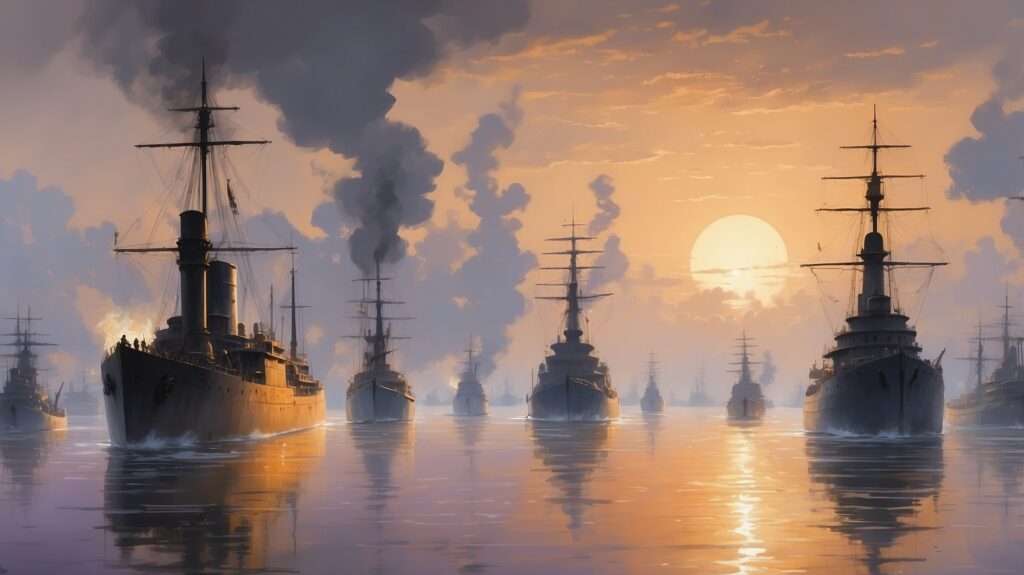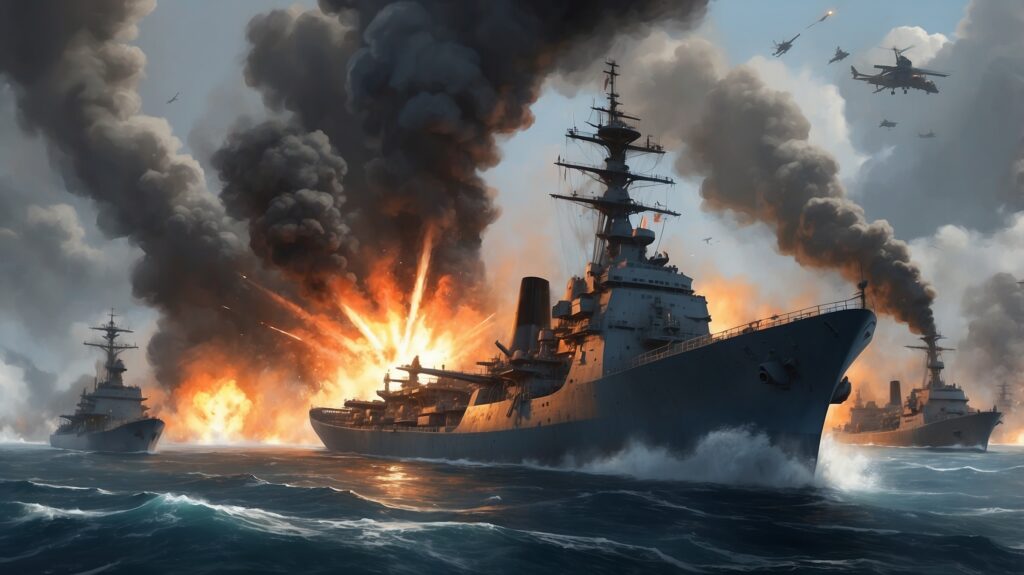
In the shadow of history, where smokestacks met sea mist and cannon blasts echoed across steel decks, the Russo‑Japanese War (1904–1905) played out in brutal naval duels and siege warfare. Port Arthur, a two-player board game that recreates this forgotten but pivotal conflict, delivers a sharp and elegant strategic experience. But now, this game has been reimagined through original music and visual storytelling — giving players a multi-sensory dive into the cold waters of early 20th-century warfare.
🎵 The Sound of Steel on Water
The Port Arthur Original Soundtrack brings the gameboard to life with six musically rich compositions, each capturing a distinct moment in the conflict. The musical arc follows the emotional tempo of naval war: tension, motion, chaos, loss, and eventual calm.
- “Dawn over the Yellow Sea” opens with muted brass and misty strings, a slow, uncertain breath before engagement.
- “Torpedo Run at Port Arthur” crackles with kinetic energy — a dangerous ballet of searchlights and torpedoes in the dark.
- “Siege Lines” grinds through a dirge of drums and cellos, echoing the claustrophobic weight of trench warfare on land.
- “Rozhestvensky’s Voyage” is a mournful journey — slow, exhausted, and somber, a thousand nautical miles and months at sea distilled into cello and clarinet.
- “The Clash at Tsushima” is a symphonic explosion: distorted brass salvos, fragmented motifs, and high seas chaos rendered in crashing percussion.
- “Peace under the White Flag” closes the album with calm resolve — bittersweet harmonies floating over still water.
The compositions favor military orchestration, modal harmonies, and textural contrasts to mirror the uncertainty and brutality of naval strategy.

🖼️ War in Tones and Shadows
Accompanying each track is a meticulously designed illustration that invites you deeper into the world of Port Arthur. These are not generic battle scenes — they are artist-guided visual interpretations of the music’s atmosphere and narrative:
- Fog-choked seas at sunrise,
- Searchlight-lit torpedo skirmishes,
- Silent siege trenches under steel skies,
- Monolithic ships enduring storms,
- Explosive naval crossfire,
- and finally, a solemn surrender in golden light.
Each image adheres to a consistent design vision: muted palettes, maritime symmetry, and early 20th-century aesthetics. There’s a balance between realism and painterly drama — echoing the uncertainty of war and the precision of the game’s strategic decisions.
🎲 Game Meets Atmosphere
What makes Port Arthur unique is its tight focus: naval control as the path to land supremacy. Players don’t just aim to sink ships — they aim to hold the sea lanes long enough for Japan’s army to advance inland. The game is compact but intense, with shifting initiative, controlled risk-taking, and an emphasis on momentum.
The soundtrack and artwork enhance this tension. They transform a 60-minute game into something that feels bigger, broader — part wargame, part opera.
🌊 Final Thoughts
Port Arthur is more than a historical simulation. With its evocative soundtrack and cinematic visual layer, it becomes a memorial in motion — a meditation on imperial ambition, tactical brilliance, and the grim poetry of naval war.
Whether you’re a board gamer, a historical fiction fan, or a lover of thematic music, this is a journey worth taking. From the first foghorn to the last white flag, Port Arthur invites you aboard — not just to command, but to feel.